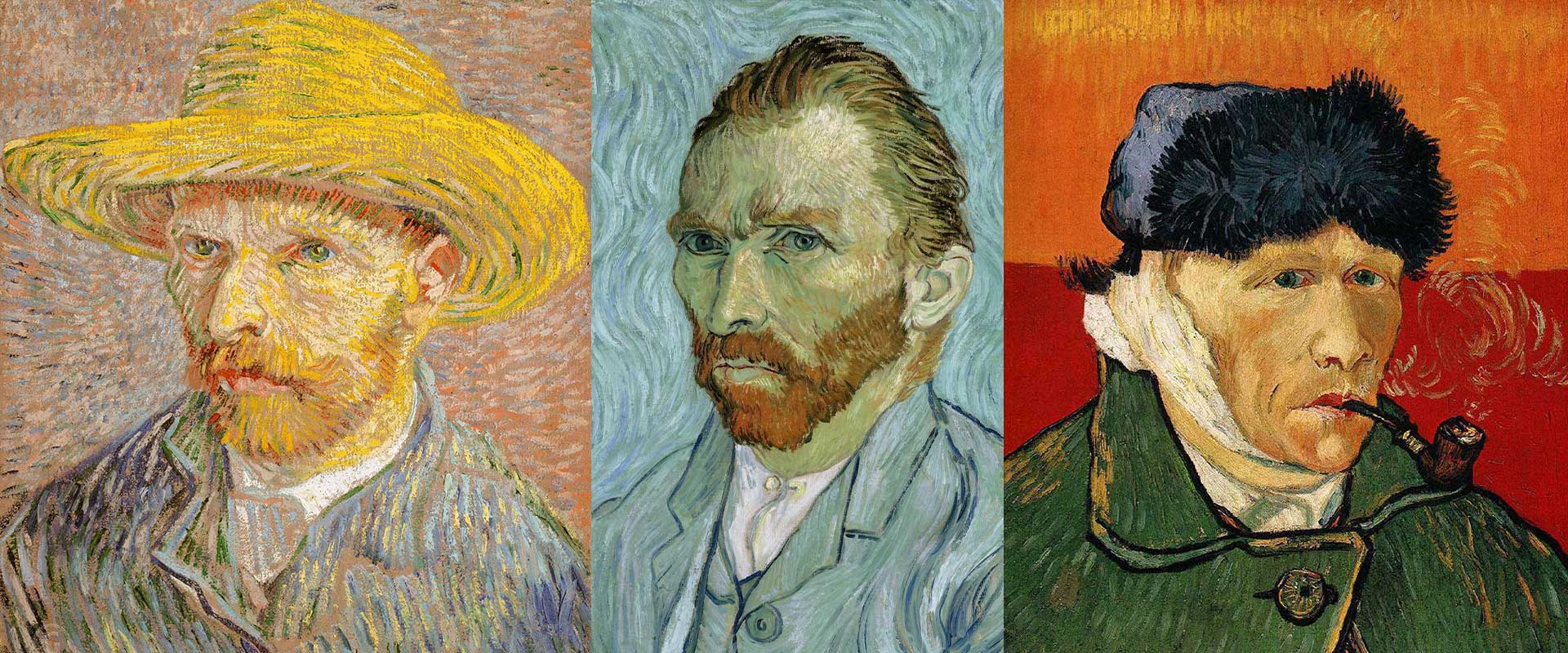What Happens When an Artist Paints Himself?
Vincent van Gogh didn’t just paint landscapes and starry skies — he also turned the brush on himself. In fewer than five years, he produced over 30 self-portraits, making him one of the most self-depicted artists in history. These aren’t just likenesses. They’re honest, emotional, and expressive explorations of his mental state, his evolving technique, and his identity as an artist.
In this article, we explain Van Gogh’s self-portraits, looking at why he painted so many, how they changed over time, and what they reveal about the man behind the canvas.
Why Did Van Gogh Paint Himself So Often?
Practical Reasons
Van Gogh couldn’t afford to hire models. Living in poverty for most of his life, he used what he had — a mirror and his own reflection — as a stand-in subject. Painting himself allowed him to practice portraiture, experiment with style, and explore new techniques without any additional cost.
Emotional and Psychological Motives
His self-portraits also served as a kind of visual diary. In moments of isolation, self-doubt, or emotional turmoil, painting himself may have been a way to cope, to reflect, or to understand himself better. These works often act as a barometer for his internal world — some calm and composed, others fractured and raw.
A Timeline of Self-Discovery Through Paint
Van Gogh’s self-portraits can be divided into three main periods: Paris (1886–1888), Arles (1888), and Saint-Rémy (1889). Each marks a shift in tone, technique, and mood.
1. Paris (1886–1888): Testing the Waters
When Van Gogh moved to Paris, he was exposed to the works of the Impressionists and Neo-Impressionists. This sparked a radical shift from the darker, earthy tones of his early Dutch period to brighter colors and looser brushwork.
In pieces like Self-Portrait with Grey Felt Hat, we see:
- Short, energetic strokes
- Cooler color palettes (blues and greys)
- A somewhat cautious demeanor
He looks serious, almost guarded — as if still unsure of his place in the art world. But he’s watching, learning, evolving.
2. Arles (1888): Color, Confidence, and Crisis
Van Gogh moved to Arles seeking light, inspiration, and community. This was one of his most productive and experimental periods. His portraits became bolder — both in style and in emotion.
Take Self-Portrait Dedicated to Paul Gauguin, where he wears a vibrant green coat and orange beard. His brushstrokes are directional and rhythmic. His gaze is intense, yet strangely detached.
Later that year came Self-Portrait with Bandaged Ear, painted after his infamous breakdown. In it, we see:
- A pale, tired face
- Heavy winter clothing
- A Japanese print behind him, representing his enduring artistic fascination
Here, Van Gogh doesn’t mask his suffering. He puts it right on the canvas.
3. Saint-Rémy (1889): Expressive Introspection
During his stay in the Saint-Rémy asylum, Van Gogh painted some of his most emotionally resonant self-portraits. His brushwork became more expressive and turbulent, as seen in Self-Portrait with a Palette.
These works convey:
- Resilience through illness
- Fierce dedication to his craft
- A deepening emotional awareness
He often avoids direct eye contact with the viewer — suggesting introspection, or even a desire to disappear within the paint.
Understanding the Symbolism in His Self-Portraits
Van Gogh’s self-portraits are loaded with visual symbolism — not in the traditional sense of allegorical objects, but through technique, color, and composition.
Brushwork
His use of thick impasto and swirling strokes gives each piece a sense of movement and mood. Calm portraits have smoother textures; chaotic ones reveal agitated layering and directional tension.
Color
Colors in Van Gogh’s self-portraits aren’t naturalistic — they’re emotional. Cold blues and purples suggest melancholy, while oranges and greens introduce energy or discord.
Gaze and Posture
- Direct stares: moments of confrontation or confidence
- Side glances or lowered eyes: vulnerability, introspection
- Rigid shoulders: anxiety or tension
He doesn’t pose to flatter — he poses to reveal.
How His Self-Portraits Shaped Modern Art
Van Gogh’s approach to self-portraiture was groundbreaking for his time. Instead of striving for realism or idealization, he painted the truth of how he felt. This raw honesty paved the way for expressionists and modern portrait artists to explore the emotional self.
Today, his self-portraits remain some of the most studied works in art history — not only for their beauty, but for the depth of humanity they express.
Famous Van Gogh Self-Portraits and What They Reveal
| Title | Year | Key Emotion or Message |
| Self-Portrait with Grey Felt Hat | 1887 | Experimentation, artistic learning |
| Self-Portrait Dedicated to Gauguin | 1888 | Artistic pride, strained friendship |
| Self-Portrait with Bandaged Ear | 1889 | Trauma, resilience |
| Self-Portrait with a Palette | 1889 | Isolation, self-assertion as an artist |
Conclusion: A Mirror That Told the Truth
Van Gogh’s self-portraits are more than repeated studies of his face — they’re deeply personal expressions of an artist searching for meaning, purpose, and peace.
Through his gaze, his color choices, and his evolving technique, we see a life in motion and emotion. From the disciplined lines of Paris to the swirling intensity of Saint-Rémy, Van Gogh’s journey is vividly recorded — not in a diary, but on canvas.
Looking in the mirror, he didn’t just see his reflection. He saw everything he carried inside, and he had the courage to paint it.
As you explore his work, consider how these self-portraits speak to your own journey. If you’re drawn to Van Gogh’s emotional style and vivid palette, explore our curated collection of Vincent van Gogh wall art prints, perfect for bringing a sense of depth and authenticity into your space. You may also be inspired by our expressionist wall art — filled with bold strokes, color, and feeling.





